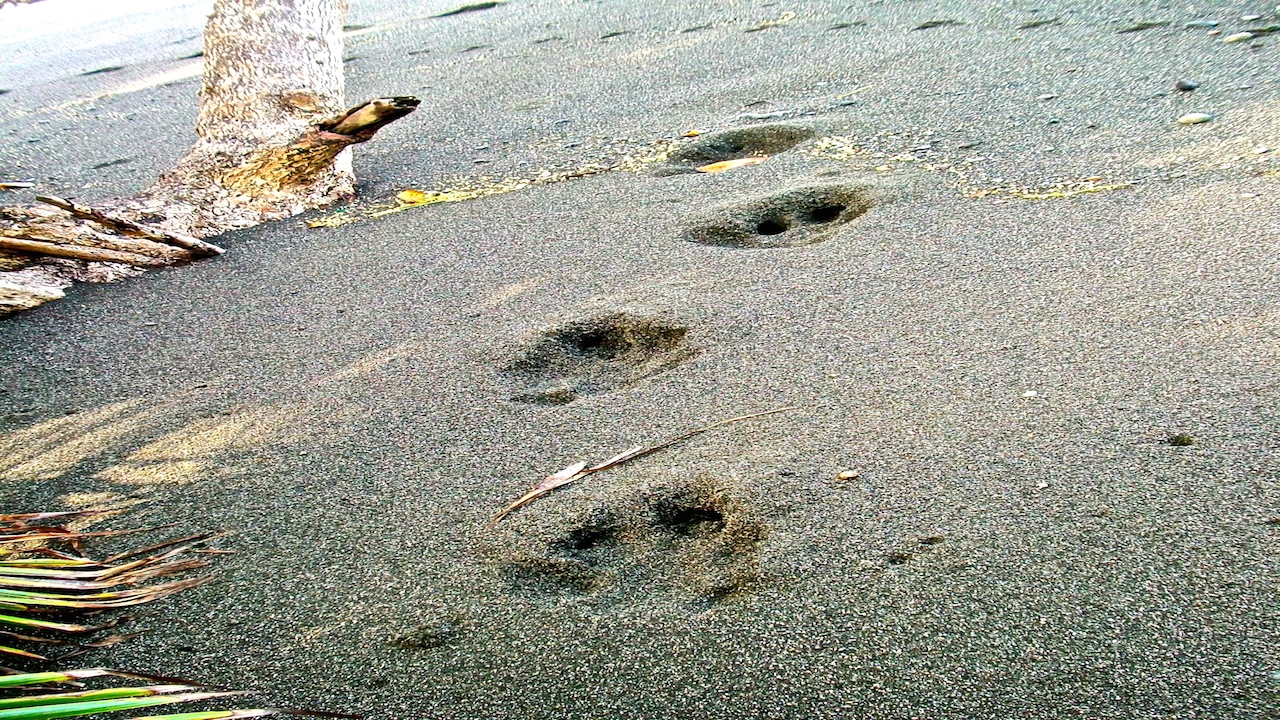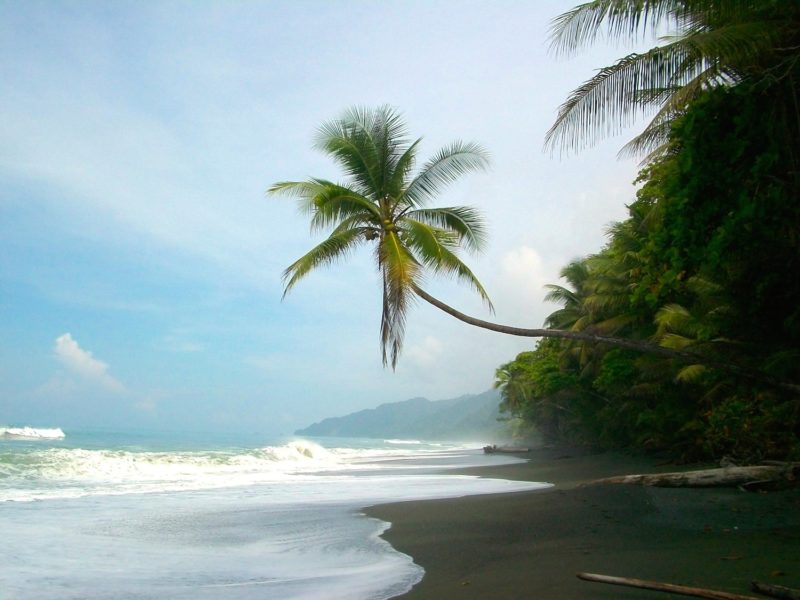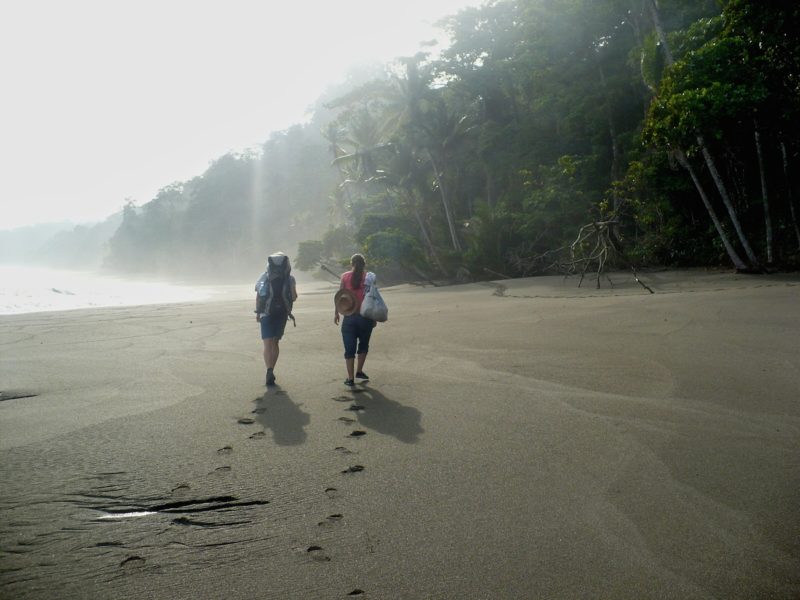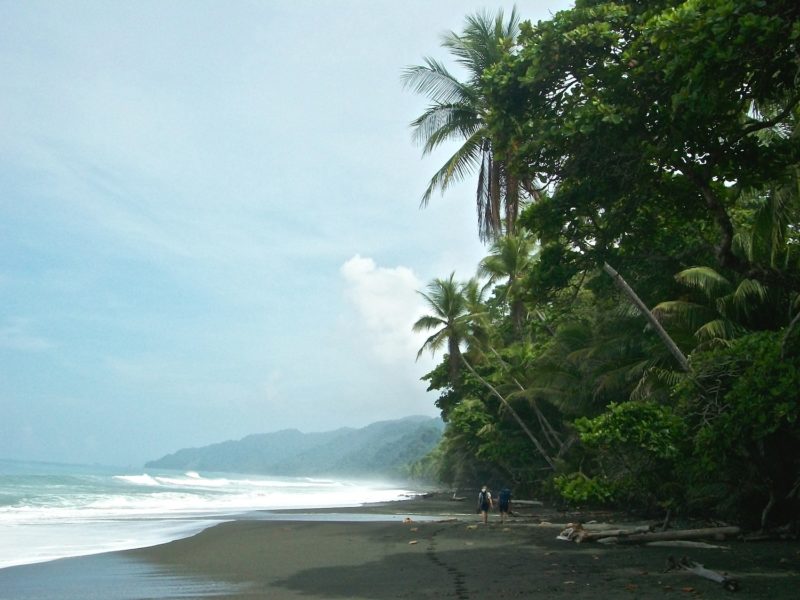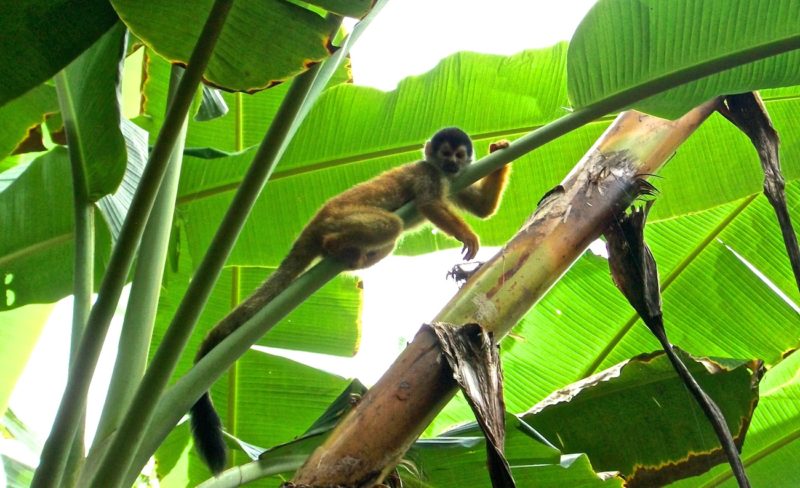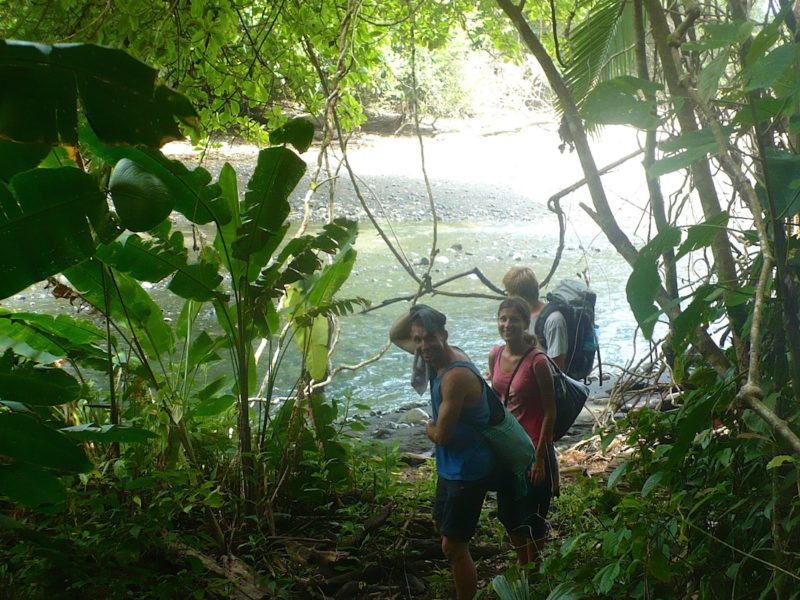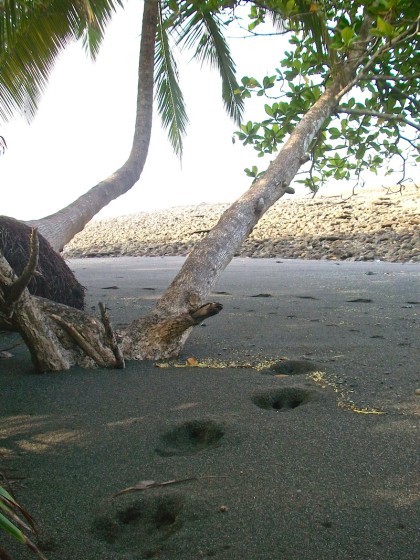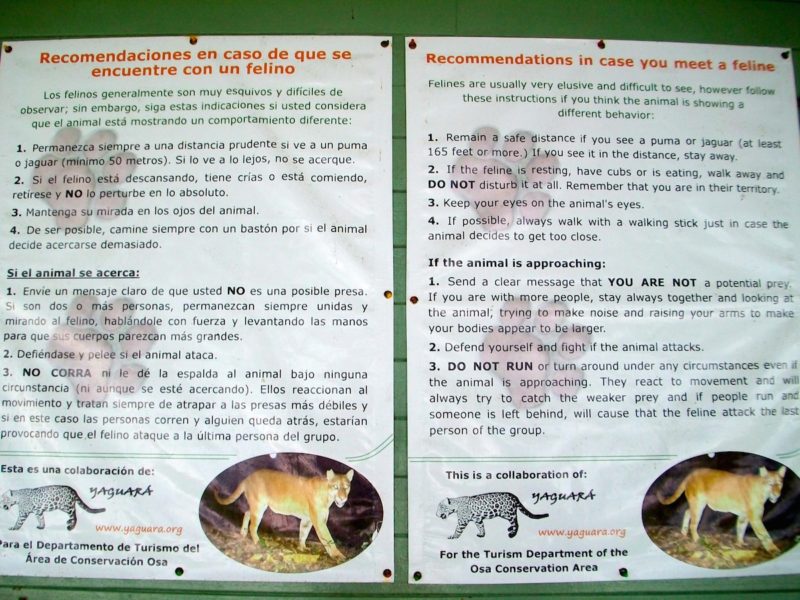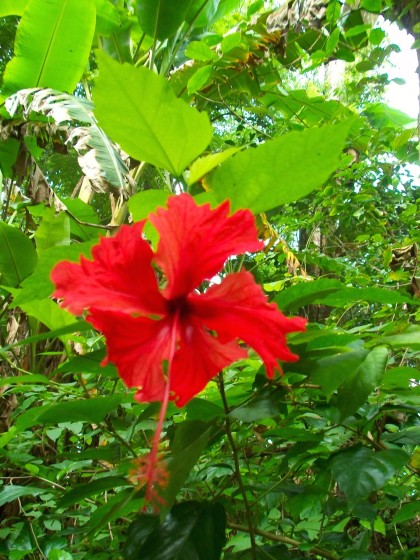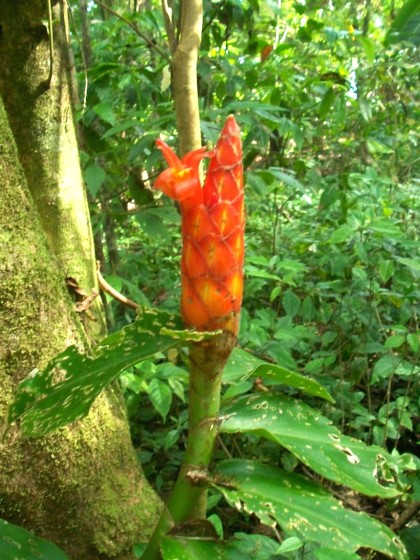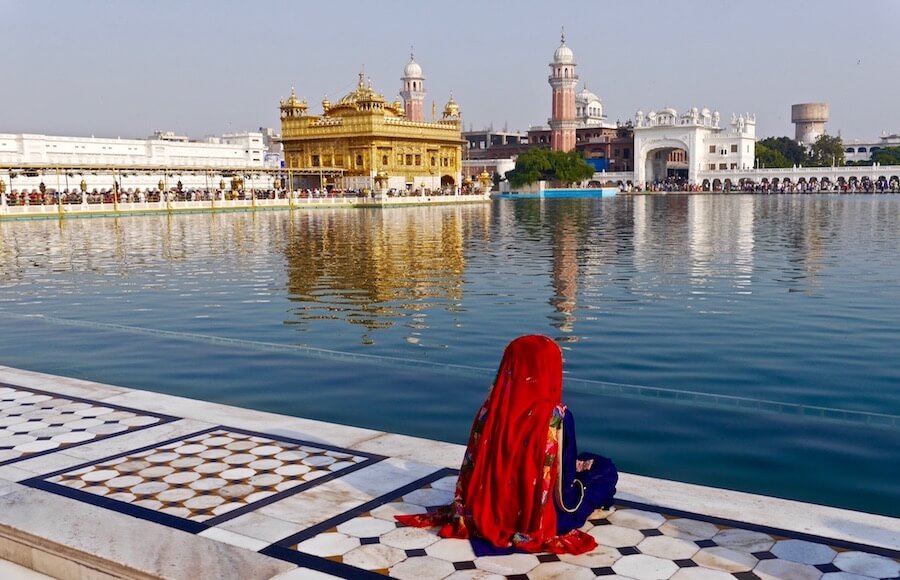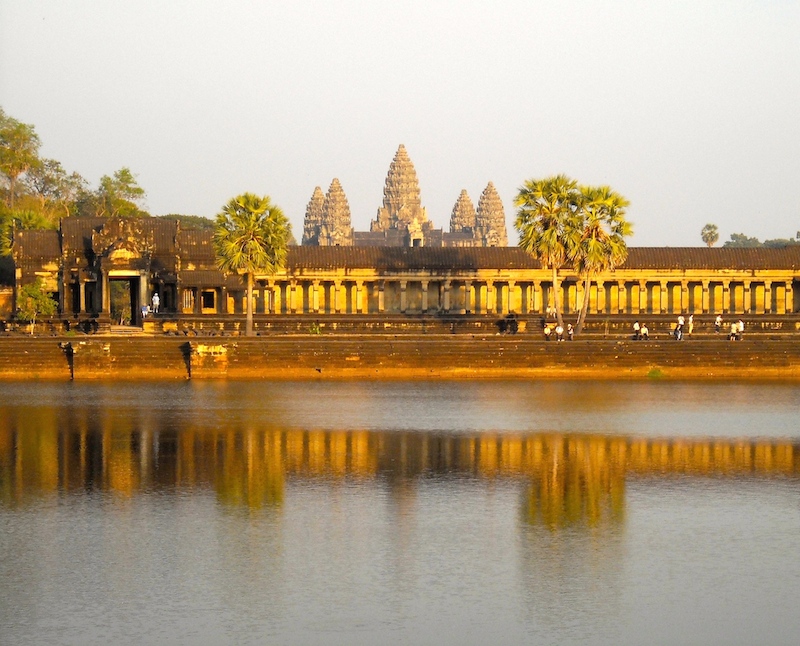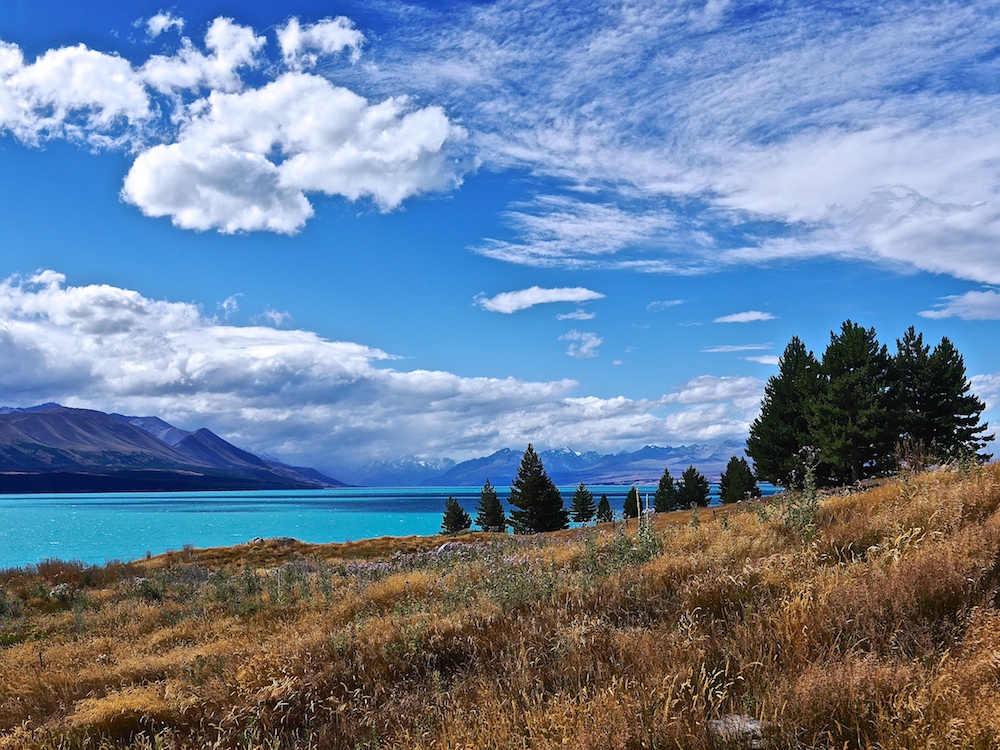Lost in a jungle in Corcovado Costa Rica
Have you ever got lost in a jungle?
We did.
And here is our story.
Lost in a jungle in Corcovado Costa Rica
Corcovado, the National Park in the south-west of Costa Rica, was a place we knew we had to visit after just reading about it.
We liked the fact that only a few people visit the park every day.
We had to arrange a visitor permit beforehand in San Jose, the capital of Costa Rica, and pay a small fee. We got a permit for 2 days and paid for a hut to stay overnight.
What could be more exciting than sleeping in a native wild jungle?
Next day at 6 a.m. we took a local truck to get to the gate of the park. There were some other visitors and local people in the vehicle. The truck was stopping and people were getting off during the journey. Then only two guys and us stayed in the truck. Martin from Germany, studying Medicine, and Valery from France living in Dublin.
To our surprise, when we got off at the starting point, the gate of the national park, the guards told us that the huts were 20 km away!!
We had been thinking and dreaming of wandering a little in a jungle, having a swim in the ocean and then resting in a hut, listening to the sounds of the jungle…. How naive had we been!
So what shall we do now?
We had big backpacks and not proper shoes with us that day!
We didn’t count on such a situation at all.
We had to make a quick decision. Martin and Valery were waiting for us.
Moreover, guards of the park told us that we should hurry up to reach a wide river that flows through the national park, before high tide.
We took what we needed for the two days and the night and left the rest of our stuff at the gate. It was 7.30 a.m. when we started off on the long trek together with the guys. It was great to have their company and a German doctor, Martin, in an expedition!
When we entered the beach we had to stop and hold our breath for some seconds – the view of the wild Pacific Ocean, dark grey sand, endless beach and lush green jungle in the sunny morning was absolutely BREATHTAKING!
The idea of having a nice swim in the ocean was over. Swimming in these huge waves was completely impossible.
Walking on the beach was demanding as we were falling into the wet sand all the time.
We quickly realised that it was faster and more comfortable to walk in the jungle on a solid ground. We entered the jungle just by the beach and admired all the tall trees, colourful butterflies, wonderful flowers and monkeys.
Central American squirrel monkey
We managed to cross the river just in time.
Totally exhausted, we reached the huts at 6 p.m. when it was almost dark. After the 10 hours long trek, we were happy to jump in a shower and a bed.
The next morning we got up very early, at 5 a.m.to again reach the river before high tide. Martin and Valery decided to take another, much longer, way that led in different direction. We had to take the same route to the gate where we were supposed to pick up our backpacks.
We were pretty tired after the previous day and were walking slowly. When we reached the river, it was already high tide. But there was no other way to continue. We were holding our stuff above our heads and were slowly exploring the bottom of the river with our feet while crossing it slowly. Fortunately it was only several meters wide. Later we were told that there were crocodiles in the river…. it was good that we didn’t know this before crossing the river.
It was already the afternoon and the tide was high.
The waves were HUGE and were flooding the beach completely. It was impossible to continue walking on the beach. We had to walk in the jungle, even though there was no clear path. It was hard to keep walking along the ocean but important to keep the right direction. The jungle just by the beach was too thick to get through. We were forced to walk deeper into the jungle. At one moment we could neither see, nor hear the ocean anymore. The tiny path leading us ahead disappeared.
We knew that we were lost. We were lost in a deep jungle that pumas call their home.
It was getting dark. We didn’t have a torch. It started to rain. We didn’t have raincoats. We were cold, exhausted and hungry. We were trying not to panic and kept walking briskly. In exactly one hour we found ourselves at the same place. It was not fun anymore. We were trying to remember what the guards said about the pumas. The most important thing we could remember was that pumas are night animals. When they were talking about them, we didn’t pay much attention. We were sure we wouldn’t be in the jungle at night when pumas wake up and start searching for food.…..
Shall we run when we ran into one? Who could be faster? We could just guess. Or shall we smile at it and try to be friendly and tell it politely that we just got lost and ask if it happen to know where the way out of this damned jungle is?
We started walking again, hoping that our intuition was leading us in the right direction this time. It was already dark and we couldn’t see anything. We were just guessing where to go.
Then, suddenly, we could hear the sound of the waves! At that moment we knew we were safe. In spite of being so tired, we started running and finally got out of the jungle. We saw a man at the beach who was staring at us. He couldn’t believe that there was still somebody in the jungle.
We were lucky. This man had tents for rent. We didn’t notice them the previous day. He even prepared us a very nice meal. We lay down in the tent and fell asleep in a second.
Next morning, we went to say goodbye to the outstanding grey-sand beach. Suddenly, we noticed puma footprint in the wet sand. It was obvious that the puma stepped out of the jungle and jumped on a palm, leaving its footprint behind. Astonished we looked at the palm. Fortunately, the puma wasn’t there anymore.
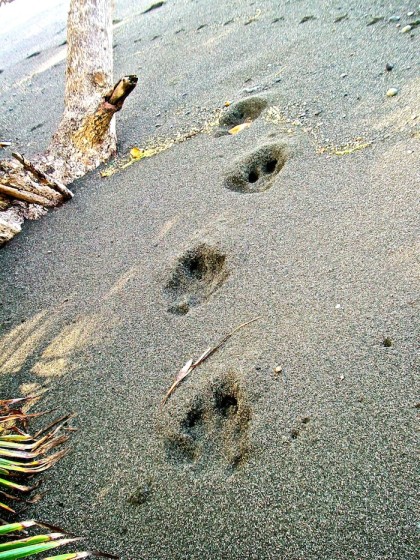
When we found the guards later and were all upset telling them what had happened to us the previous day, they just said: You were very lucky!
Would you like to know what to do if you are lost in a jungle and by chance run into a puma?
- DON’T RUN! Even if it’s your first instinct. It would think that you are its food.
- Even if it sounds pretty crazy, keep an eye contact with it.
- Try to send it a message: I know that I’m on your territory but I’m not your dinner (or breakfast?)! And walk slowly back while still maintaining an eye contact.
- Try to make yourself bigger – lift up your arms and jump. Make loud sounds. Go slowly back.
Don’t forget to maintain the eye contact with the puma till the very last moment.
Maybe you are lucky and the puma is not hungry.
Official instructions 🙂
In spite of our scary experience, we highly recommend venturing into Corcovado National Park!
Want to visit Corcovado National Park in Costa Rica?
Here is some useful information and tips.
Corcovado is situated in the south west of Costa Rica. It is the largest park in Costa Rica (424 square km). The park conserves the largest primary forest on the American Pacific coastline and one of the few remaining areas of tropical rainforests in the world.
The abundance in wildlife (see below) can be explained by the variety of vegetation types, including montane forest (more than half the park), cloud forest, jollilo forest (palm swamp), prairie forest, alluvial plains forest, swamp forest, freshwater herbaceous swamp and mangrove, with over 500 tree species, including purple heart, poponjoche, nargusta, banak, cow tree, espaveand crabwood. Another reason for the diversity (also in all of Costa Rica) is that it lies on a north-south corridor that links North America and South America.
Corcovado is home to Baird’s tapir, the very rare harpy eagle, jaguar, ocelot, margay, aguarindi and puma. You can spot four species of Costa Rican monkeys – Central American squirrel monkey, white-faced capuchin, mantled howler, and Geoffroy’s spider monkey. Other mammals include two-toed and three-toed sloth, collared peccary, northern tamandua and silky anteaters.
Poison dart frogs and several species of snake (including the venomous fer-de-lance and bushmaster) are also common.
The park’s rivers and lagoons are home to the American crocodile, spectacled caiman and bull sharks.
The coasts such as Drake Bay are homes for the humpback whales that come each winter. Spinner and rough-toothed dolphins and smaller cetaceans, such as false killer whales and killer whales, are seasonal migrants to these areas. Manatees have been hunted in Costa Rica in the past, resulting in today’s small numbers left. They can occasionally be seen by the coast.
HOW TO GET TO CORCOVADO
The best way to get to Corcovado National Park is to take a bus in San Jose to Puerto Jimenez, at the bus station named Transportes Blancos in Barrio Mexico, San Jose. The cost is about 2000 colons /4 USD. The bus leaves at 6. a.m. and 12 a.m. and takes 8 hours. It’s good to go by the early bus to have time to arrange an entrance permit at the headquarters of the park in Puerto Jimenez. The cost of the permit is 8000 colons/15 USD and you have to pay the money into the bank, which closes at 3.45 p.m.
But before that, the headquarters require visitors to ensure a local guide. That has been new information since 2014 (we went there in 2011). Visitors to Corcovado are not allowed to enter the park on their own anymore. Before applying for the entrance permit, they have to book a guide. The guides charge about 125 USD.
The reason for this is that in the last few years, a lot of visitors got lost and it took the national park staff days to find them. There is a recent story (March 2015) of a young man who went into Corcovado NP alone and he hasn’t been found yet.
At the time we went to Corcovado, it was not an obligation to walk with a guide (but we probably should have got one, however then it wouldn’t have been so adventurous!).
Email the headquarters ( pncorcovado@gmail.com ). They’ll send you a list of official guides, so that you can contact guides beforehand and ask them how much they charge for the service, mainly if you are just 2 people, and for how many hours. The price should be split among the group of visitors. Make sure that you choose a guide that speaks English if you don’t speak Spanish.
The guides should answer all your questions, mainly about different routes in the park.
After spending a night in Puerto Jimenez, you will pick up the permit from the headquarters.
If you don’t have your own transport, you will have to spend another night in Puerto Jimenez before heading to Corcovado.
Next morning, use the local public transport, which leaves at 6. a.m., to go to San Pedrillo ranger station. The bus drops you off by a small shop that is very close to the ranger station. There, you will show the guards your permits. You can also camp by the ranger station. There is no food or water by it.
Just before entering the park, which is about 4km from the ranger station (that’s where we spent the night after the 2-day trek), you’ll see some cottages where you can stay after a 1-day trek.
The way to the Sirena ranger station is about 20 km long. The station is the place where we slept. It’s located roughly in the middle of the national park.
There are different trekking routes, depending on how fit you are and how much time you want to spend in the park. It’s possible to walk there for just a couple of hours, all day or even for multiple days.
You can book a bed (dorms) in the Sirena ranger station beforehand (4250 colons/8USD), or you can sleep in your own tent for half the price there.
The food in the restaurant in Sirena is expensive. Visitors are allowed use the kitchen to prepare their own food.
You can use Wi-Fi in the station.
Tips:
- Wear good shoes.
- Pack as light as possible.
- Sunscreen and insect repellents are both musts.
- Take huge water supplies for the trek and food for all day and the next day, or all your stay in the park. Stock up in Puerto Jimenez.
- Get a torch and also a raincoat if you plan to walk in the park longer than a few hours.
- If you wear glasses, it is better to have contact lenses; the glasses will be foggy in a humid jungle.
- Don’t forget to charge your camera before entering the park!
- If you stay overnight at Sirena ranger station, it’s good to bring your own sheets or a thin sleeping bag. They don’t provide sheets, blankets, or pillows.

